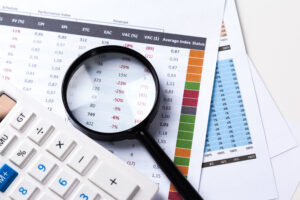Are you in search of a reliable and efficient way to manage your financial data? Look no further! In this article, we’re diving deep into the world of balance sheets and how a free balance sheet template for Google Sheets, Excel, or PDF can revolutionize your financial tracking process. Whether you’re a small business owner, an individual managing personal finances, or simply curious about financial statements, this guide will provide you with all the essential information you need.

What is a Balance Sheet?
A balance sheet is a crucial financial statement that provides a snapshot of an entity’s financial position at a specific point in time. It consists of three major components: assets, liabilities, and equity. These components showcase how assets are funded through either liabilities or equity. Essentially, a balance sheet illustrates the accounting equation:
Assets = Liabilities + Equity.
Types of Balance Sheet Templates

When it comes to managing your financial data, using a balance sheet template can be a game-changer. There are several types of balance sheet templates available, each designed to cater to different needs:
Simple Balance Sheet Template
A simple balance sheet template is perfect for individuals or small businesses looking for a straightforward way to track their financial standing. This template typically includes sections for assets, liabilities, and equity, making it easy to input and analyse your financial data.
Balance Sheet Template
For more comprehensive financial analysis, a detailed balance sheet template is a great choice. This template provides additional sections that break down assets and liabilities into further categories, allowing for a more in-depth understanding of your financial position.
Balance Sheet Format
The format of a balance sheet template usually consists of rows and columns that organize financial data. Assets are listed on the left side, while liabilities and equity are listed on the right side. This format ensures that the accounting equation remains balanced.
Balance Sheet Equation
Understanding the balance sheet equation is essential for interpreting this financial statement. The equation, Assets = Liabilities + Equity, showcases the relationship between the various components. Assets represent what an entity owns, liabilities represent what it owes, and equity represents the residual interest of the owners.
Assets on a Balance Sheet

Assets are the resources owned by an entity that have future economic value. They can be categorised into two main types:
Current Assets
Current assets are those that are expected to be converted into cash or used up within a year. Examples include cash, accounts receivable, and inventory.
Non-Current Assets
Non-current assets, also known as long-term assets, have a longer lifespan and are not expected to be converted into cash within a year. Examples include property, equipment, and investments.
Liabilities on a Balance Sheet
Liabilities are the obligations an entity owes to external parties. Like assets, liabilities are also divided into two main types:
Current Liabilities
Current liabilities are obligations that need to be settled within a year. Examples include accounts payable, short-term loans, and accrued expenses.
Non-Current Liabilities
Non-current liabilities, or long-term liabilities, are obligations that extend beyond a year. Examples include long-term loans and bonds payable.
Equity on a Balance Sheet
“Equity” on a balance sheet is a vital concept in the world of finance. Also known as “net assets” or “shareholders’ equity,” it holds significant importance in understanding the financial standing of a company.
Understanding the Concept:
When a company prepares a balance sheet, it categorises its resources and obligations. Equity, in this context, represents the residual interest left after deducting the company’s liabilities from its total assets. In simpler terms, it’s what remains for the owners (or shareholders) of the company if all its debts are settled.
Significance of Equity:
- Ownership Stake: Equity signifies the portion of the company that belongs to its owners or shareholders. It is a reflection of their ownership stake in the business.
- Financial Health: A higher equity value generally indicates a stronger financial position. It shows that the company has more assets than it owes in liabilities, which can be a positive sign of stability.
Shareholder’s or Owner’s Equity Balance Sheet
“Shareholder’s or Owner’s Equity” is a specific subset of equity that focuses on the owners or shareholders of the company. It provides deeper insight into their financial involvement.
Understanding the Subset:
“Shareholder’s or Owner’s Equity” encompasses the financial contributions made by the owners or shareholders to the company and the earnings the company has retained over time. This subset of equity demonstrates how much of the company’s value is attributed to the direct involvement of its owners.
Components of Shareholder’s or Owner’s Equity:
- Investments by Owners: When owners invest capital (such as money, assets, or services) into the company, it’s recorded under this subset. These investments show their commitment and financial participation.
- Retained Earnings: The earnings generated by the company through its operations and not distributed as dividends are considered retained earnings. These earnings contribute to the growth of this subset of equity.
Significance of Shareholder’s or Owner’s Equity:
- Ownership Representation: This subset offers a clear representation of the financial contribution of the owners to the company. It highlights their role in building and sustaining the business.
- Financial Growth: As retained earnings accumulate over time, they contribute to the growth of this equity subset, reflecting the company’s capacity to reinvest in its operations.
Advantages of Using a Balance Sheet Template

Utilizing a balance sheet template offers numerous benefits, including:
- Time Efficiency: Templates streamline the data entry process, saving you time and effort.
- Accuracy: Templates reduce the risk of calculation errors, ensuring accurate financial reporting.
- Analysis: Balance sheet templates allow for easy comparison of financial data over time, aiding in financial analysis and decision-making.
Frequently Asked Questions
What does the balance sheet tell us?
A balance sheet provides a snapshot of a company’s financial position, showing its assets, liabilities, and equity at a specific moment. It helps assess financial health and liquidity.
What is the difference between a balance sheet and an income statement?
While a balance sheet provides a static snapshot of financial position, an income statement focuses on performance over a period. The income statement showcases revenues, expenses, and net income.
How often is a balance sheet prepared?
The frequency at which a balance sheet is prepared is a crucial aspect of financial reporting for any business entity. It plays a vital role in providing stakeholders with an up-to-date snapshot of the company’s financial position. Let’s dive into the details of how often a balance sheet is prepared and the reasons behind different reporting timelines.
Understanding the Frequency:
Balance sheets are typically prepared at the end of specific accounting periods. The frequency of preparation depends on various factors, including the nature of the business, legal requirements, industry standards, and the reporting needs of the company.
Common Reporting Periods:
- Monthly: Some businesses, especially those with complex financial operations or significant fluctuations, prepare balance sheets on a monthly basis. This frequent reporting allows for close monitoring of financial health and early detection of any issues.
- Quarterly: Many companies opt for quarterly balance sheet preparation. This timeline strikes a balance between frequent reporting and practicality, offering a snapshot of financial status every three months.
- Annually: Annual balance sheet preparation is the most common approach. It aligns with the traditional calendar year and is often required for regulatory and tax purposes. Annual reporting provides a comprehensive overview of the company’s financial performance and position.
Reasons for Different Reporting Frequencies:
- Size and Complexity: Larger organizations with complex financial transactions may choose more frequent reporting to ensure accuracy and thoroughness.
- Investor Relations: Publicly-traded companies may prefer quarterly reporting to keep shareholders informed and maintain transparency.
- Resource Constraints: Smaller businesses might find monthly reporting impractical due to resource limitations. They may opt for annual reporting to reduce administrative burden.
- Regulatory Requirements: Regulatory bodies and tax authorities may dictate the reporting frequency for certain industries.
Advantages of Regular Reporting:
- Timely Decision-Making: Frequent reporting allows for timely decision-making based on current financial data.
- Detection of Trends: Regular reporting helps identify financial trends and patterns, enabling proactive measures.
- Risk Mitigation: Early detection of financial issues can help mitigate potential risks and prevent adverse outcomes.
What Is EcomBalance?

EcomBalance is a monthly bookkeeping service specialised for eCommerce companies selling on Amazon, Shopify, Ebay, Etsy, WooCommerce, & other eCommerce channels.
We take monthly bookkeeping off your plate and deliver you your financial statements by the 15th or 20th of each month.
You’ll have your Profit and Loss Statement, Balance Sheet, and Cash Flow Statement ready for analysis each month so you and your business partners can make better business decisions.
Interested in learning more? Schedule a call with our CEO, Nathan Hirsch.
And here’s some free resources:
- Monthly Finance Meeting Agenda
- 9 Steps to Master Your Ecommerce Bookkeeping Checklist
- The Ultimate Guide on Finding an Ecommerce Virtual Bookkeeping Service
- What Is a Profit and Loss Statement?
- How to Read & Interpret a Cash Flow Statement
- How to Read a Balance Sheet & Truly Understand It
Conclusion
Incorporating a free balance sheet template for Google Sheets, Excel, or PDF into your financial management tool kit can significantly simplify your tracking and analysis processes. Whether you’re an individual, a small business, or a seasoned financial professional, understanding the components and benefits of a balance sheet template empowers you to make informed decisions and manage your financial resources effectively.









